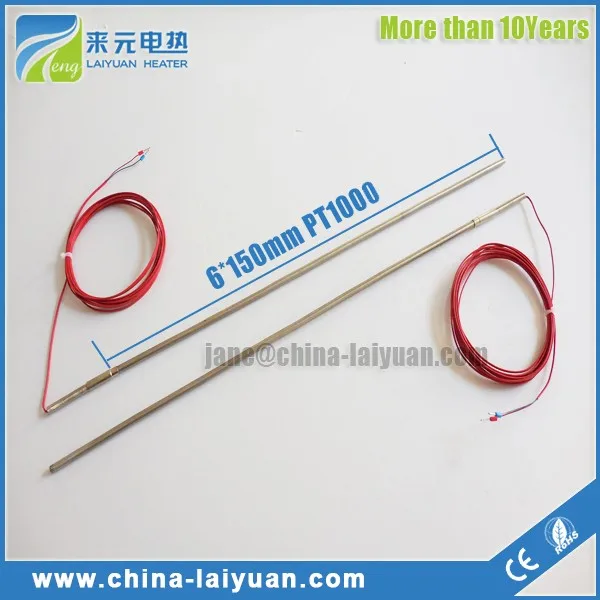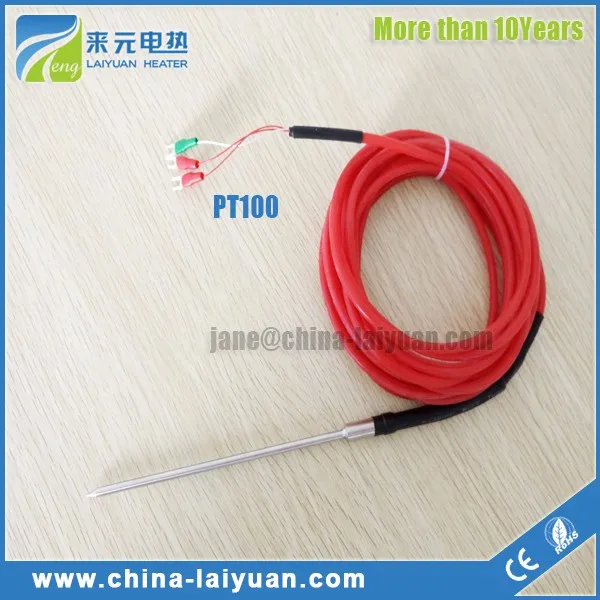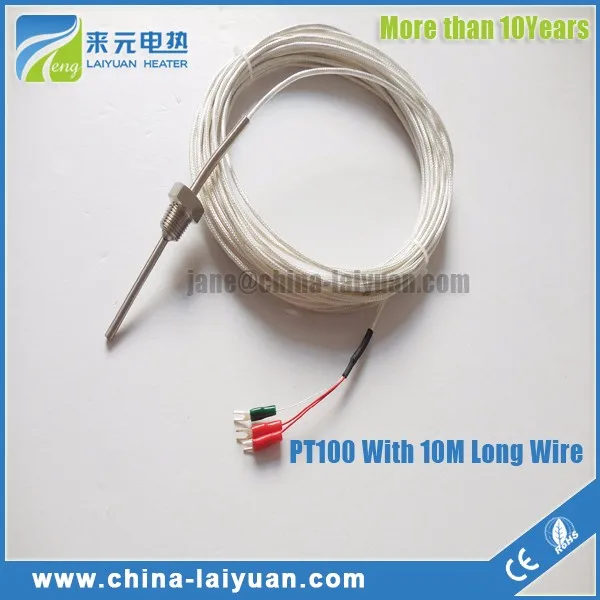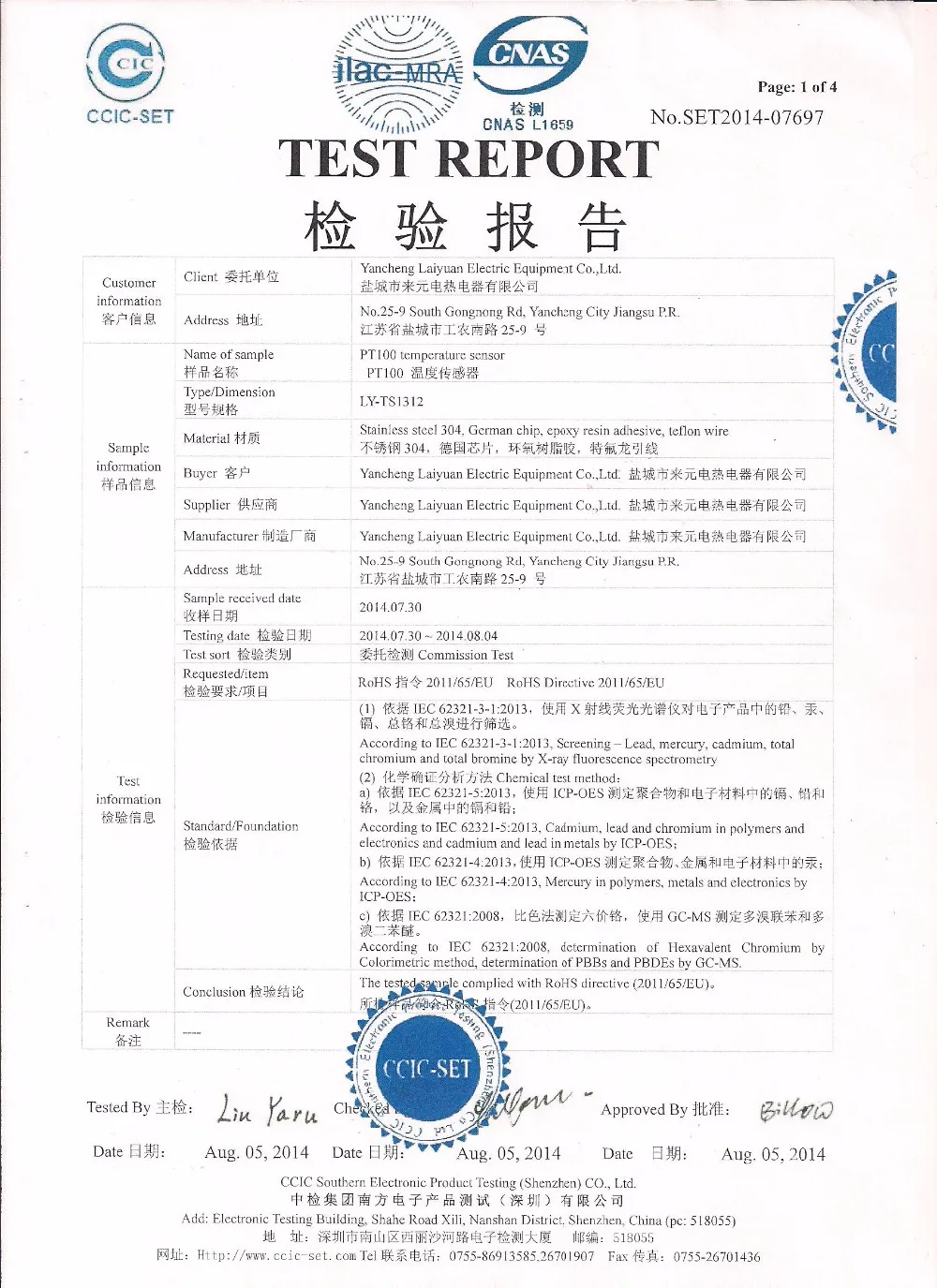
Brand Name: Laiyuan
Model Number: LY-WZP0406
Place of Origin: Jiangsu, China (Mainland)
WZP PT100 Temperature Sensor
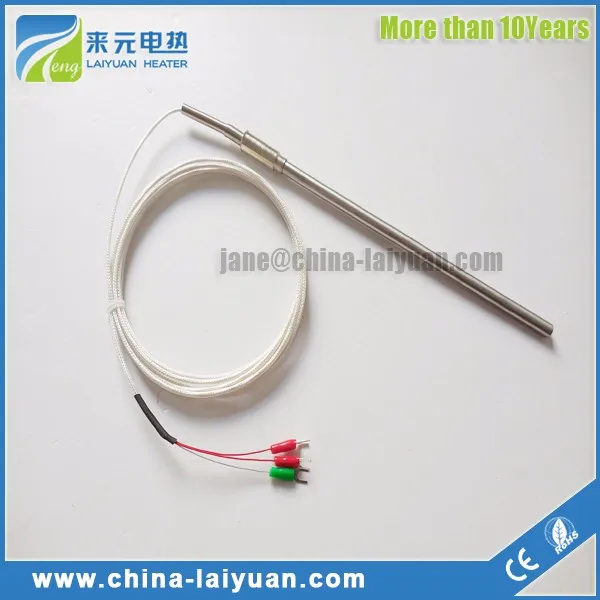
In industrial use, Pt100/Pt1000 resistance thermometers usually exist as a measuring insert which is installed in a connection head and an appropriate protective fitting. The electrical connection is made within the connection head. As a measuring insert the easily replaceable unit of the thermometer is referred to, which consists of a conduit or cable from suitable material and whose sensitive end contains one or more Pt100/Pt1000 platinum measuring resistors. Protected by a thermowell, a temperature measuring point can be constructed that enables the exchange of the thermometer in the event of repair or calibration without interfering with the process.
A further industrial design of Pt100/Pt1000 resistance thermometers are those known as cable probes. In these cases, the connection cable is assembled directly with the metallic part of the thermometer.
Whether a Pt100 or a Pt1000 sensor is used depends on the respective application. In the process industry, Pt100 sensors represent the most frequently used and the most common type of resistance sensor worldwide. However, there are applications where the use of Pt1000 sensors makes sense. Thus, for example, with a two-wire connection, the use of Pt1000 sensors has the advantage over Pt100 sensors, since here the influence of the cable length in the overall measuring error is only a fraction of that of Pt100 sensors. Also with battery-operated thermometers the higher nominal resistance of the Pt1000 sensor has a positive effect on the energy balance of the instrument. For this reason, batteries have a longer service life, meaning longer maintenance intervals and with that reduced service costs. When using Pt1000 sensors, it should be ensured that the downstream evaluation electronics can actually process the Pt1000 signal. In modern temperature controllers or display instruments this is usually the case, as the sensor input can be freely configured.
